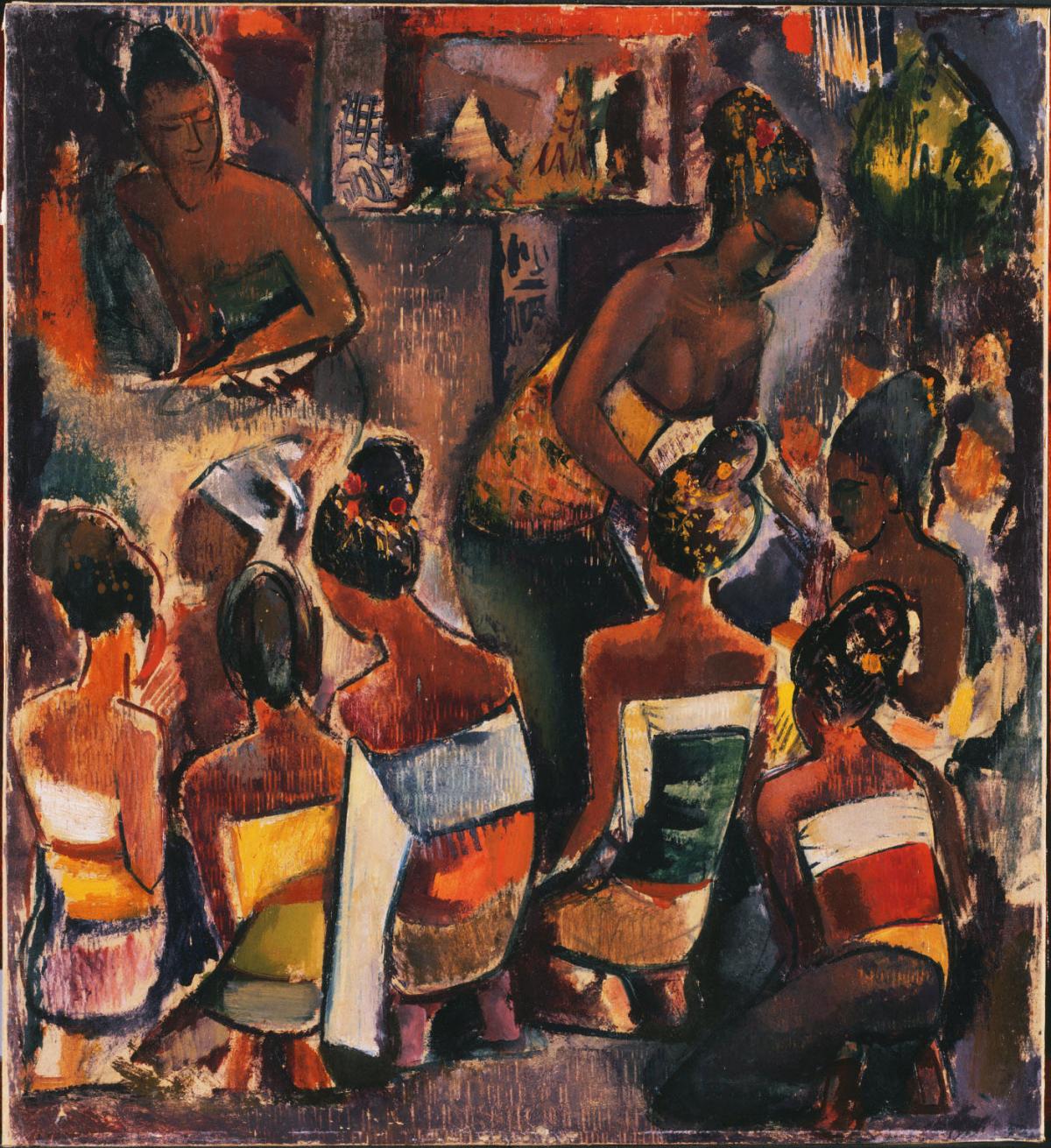Temple Feast, Bali
Maurice Sterne ( 1913 )

Maurice Sterne discovered the magic of Bali when he traveled there in fall 1912, staying nearly two years. Like his artwork in Egypt and India, Sterne tried to capture the religious spirit of Bali which permeated every aspect of the island’s life. Sterne’s love and affinity for Bali has been likened to Gauguin’s ability to capture the spirit of Tahitian people, as his art depicted the wild nature of the island. When referring to the Balinese people and culture, Sterne remarked, “They have a wonderful civilization all their own. They have their own morality, their own conventions.”
Temple Feast, Bali, is a vivid portrayal of young women participating in a temple feast. Brightly dressed in cloth of green, blue, purple, red, yellow, and white, the women are kneeling, possibly serving food. Like previous paintings of the same ilk, Sterne has flattened the canvas and the only hint of depth is portrayed by the women whose backs are displayed, giving a sense of space between the figures. Sterne tended to disregard perspective, saying it “killed the rhythm of art.” Sterne creates pattern and rhythm through color and figure repetition; he seamlessly moves the viewer’s eye around the canvas in a circle motion, which is further enhanced by his fast brushwork. Sterne felt more at home in Bali than any other place he traveled to and his paintings during his two-year stay capture both the grace and vigor he fell in love with.